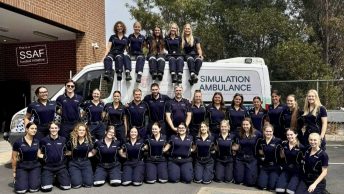This post is over three years old, the information may be outdated.
Charles Sturt University has a multitude of tools and resources to help us students succeed.
Despite being informed about all of these resources in Orientation, I figured that the tools were more effort than they were worth. I wasn’t used to studying at a University that offered such helpful tools that were easily accessible and user-friendly. In addition to the tools offered by Charles Sturt University, the internet offers some helpful resources too! So here are the top 5 things you can use as a student to help your work improve!
- APA Referencing Tools: this is an extremely unique resource for Charles Sturt students. I haven’t found anything even remotely comparable to it on the internet or other University sites. The tool will help you get that perfect mark on referencing with examples of in-text citations and reference list citations. The tool will also help you with the switch from APA 6 to APA 7 referencing.
- Academic Skills Team: this is another unique tool to Charles Sturt. It offers feedback on your assignments before you’ve submitted them. The feedback covers how well you referenced, your layout, your grammar, your themes, pretty much everything! They also offer short chats with professionals if you have any specific questions relating to academic writing.
- Primo Search: during my first couple of semesters I didn’t use Primo Search at all. I was researching purely through the secondary journal databases that Charles Sturt offers. While this tends to be a less confusing method of acquiring articles, the Primo Search option allows students to look for articles actually recommended for your subject as well as help you find journal articles in one spot rather than having to search individual journal databases. It’s a faster and more efficient way to research once you get a handle on how to use it.
- Dictionary and thesaurus: in academic writing it can be difficult to avoid repeating phrases and words, especially in long essays and reports. I found it was really helpful to search a word in google to get synonyms for what I was trying to say. In addition, using an online dictionary can help you make sure that you’re using the right word and maybe be able to provide you with additional content to reach that word count!
- Examples: when I first started University, I wasn’t sure how reports or academic papers were formatted and laid out. What really helped was doing some research on similar documents. The web has heaps of well formatted academic essays, reports, policies, strategies, posters, brochures, Powerpoint slides and more to give you an idea of what is expected. If you’re still unsure, it’s good to check in with your lecturer. These examples that you find on the internet might also be good as resources for your work or give you some ideas for content. Just be sure to reference.










